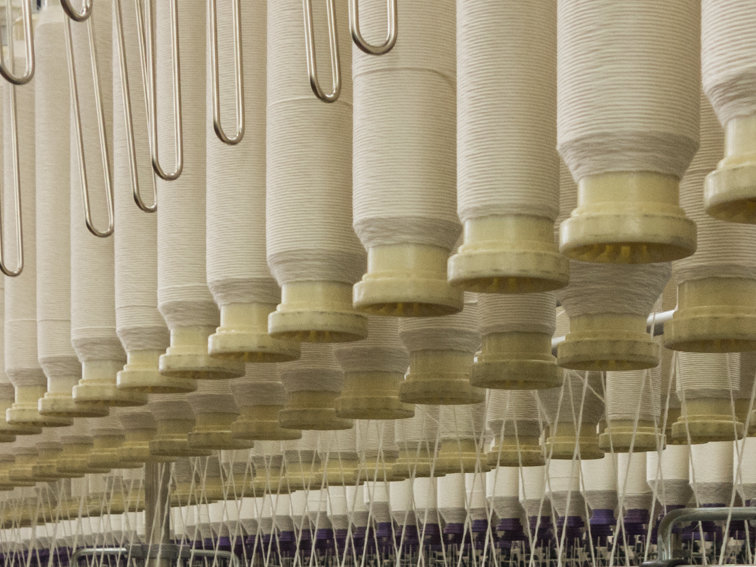
Ginning the Organic Cotton
Separation of organic cotton fibres and seeds in our own Fair Trade projects.
The Ginning Process Further Work Stages
Separation of organic cotton fibres and seeds in our own Fair Trade projects.
The Ginning Process Further Work StagesThe result of the ginning process is super-soft cotton fibres that are pressed into bales weighing up to 220 kg. Whereas the removed cotton seeds are processed into cotton oil. All that is left of this process are the so-called press cakes. These are used for animal feed. Only one third of a harvest contains usable fibres, the rest is seeds and capsules.

Organic cotton fibres are spun into yarns in our spinning mill.
Find out more